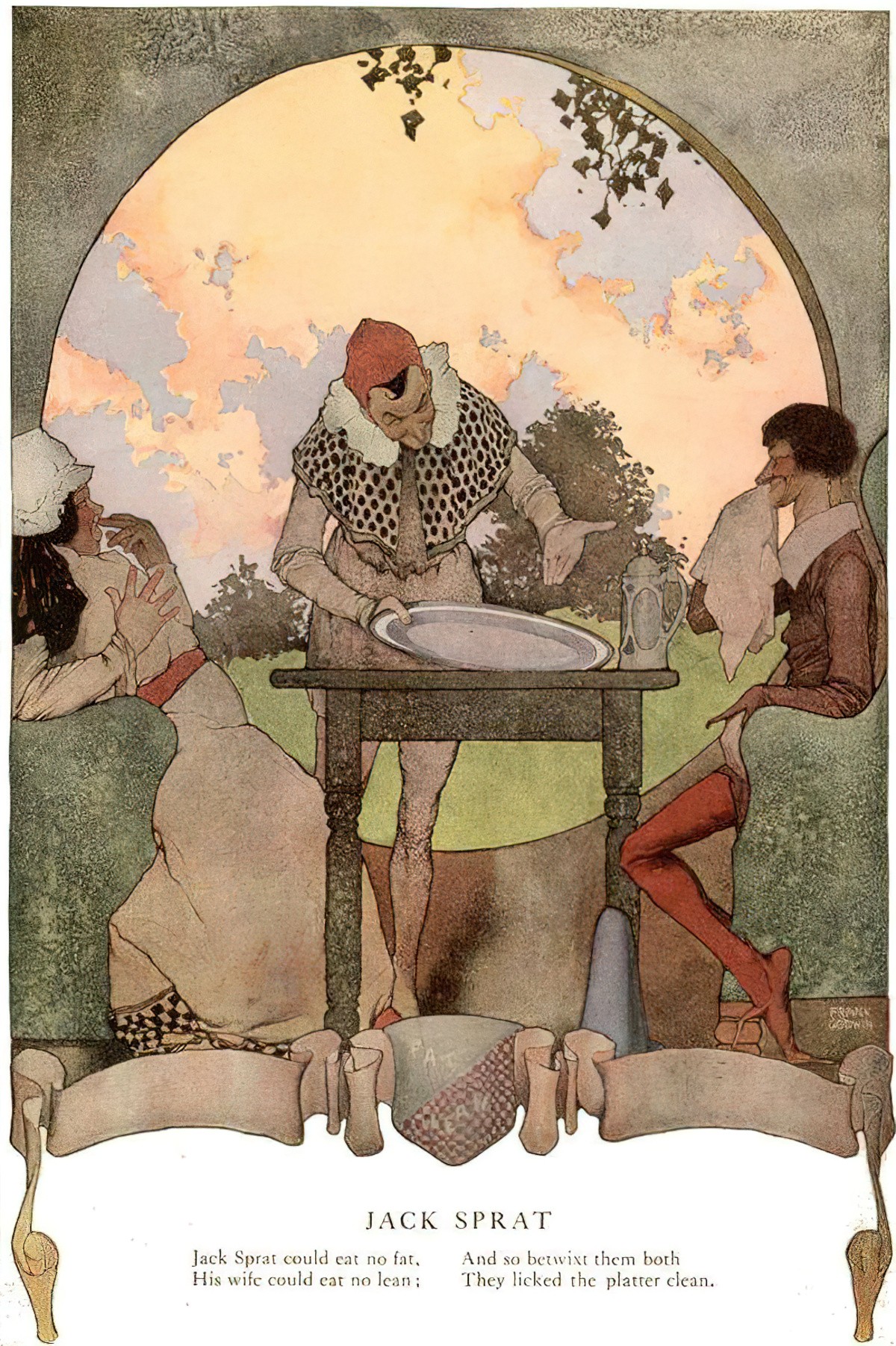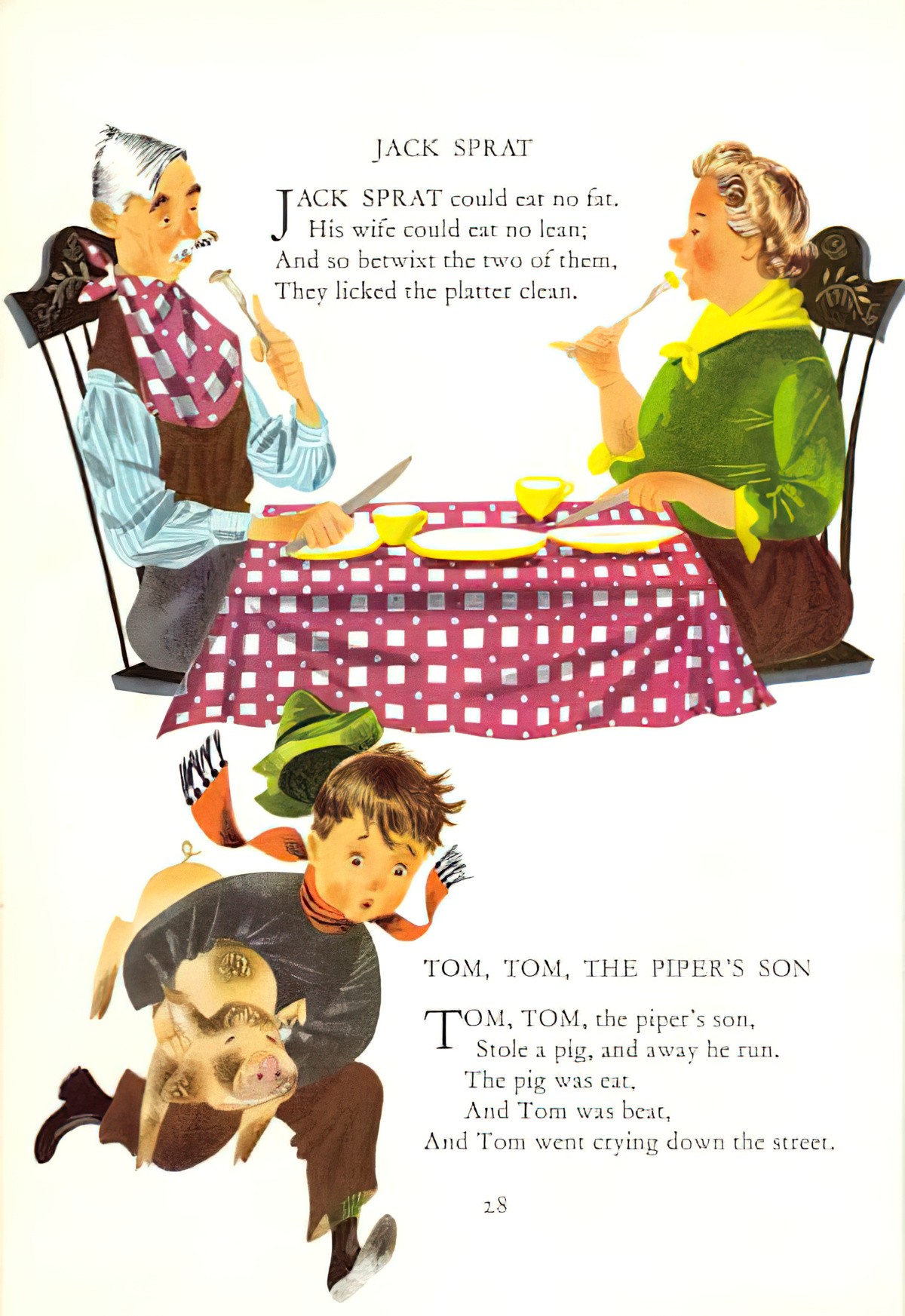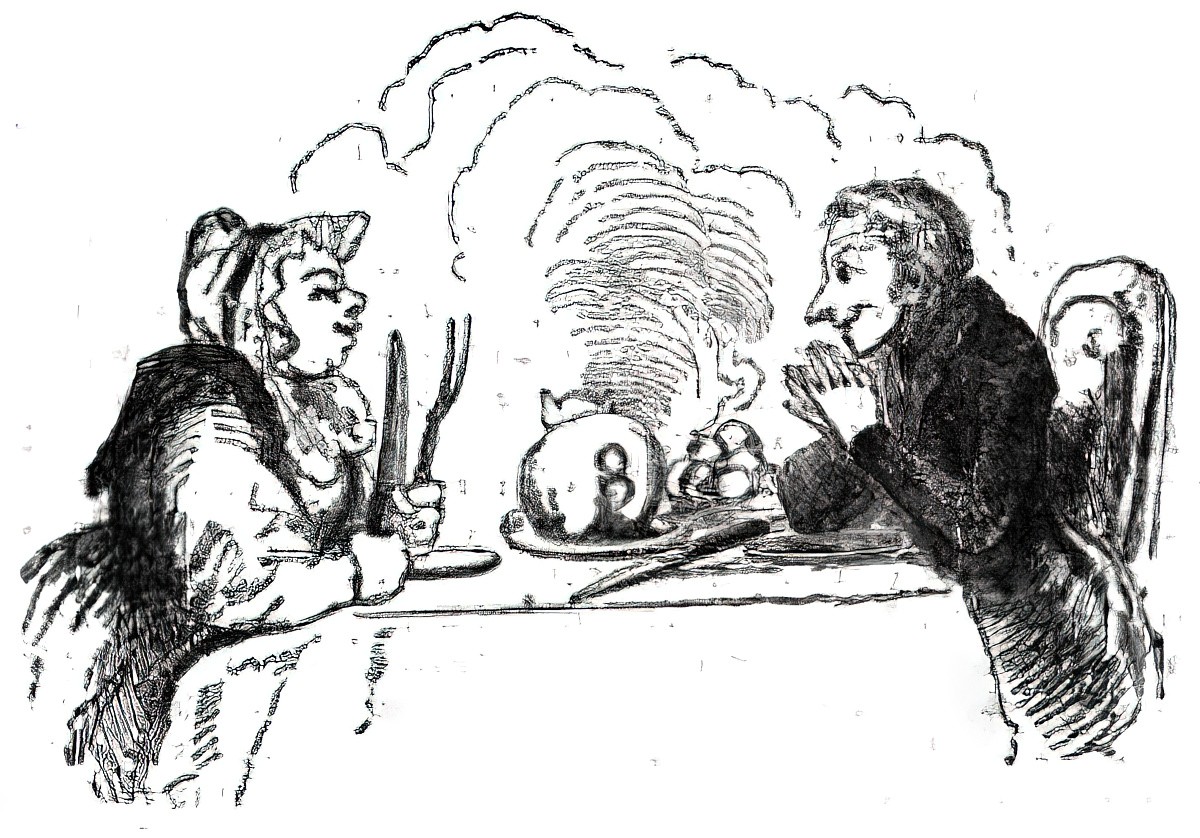On its surface, “Jack Sprat” is a nursery rhyme about a married couple with complementary tastes in food. In the 1500s, Jack Sprat was the nick name given to small men. Today you can buy sprats in cans from the supermarket. They taste like salty sardines. ‘Sprat’ describes a variety of small forage fish. The defining features of a sprats: highly active, small and — ironically — oily. Jack Sprat may eat no fat, but his namesake is full of it.
This is in line with modern dietary science, at odds with the rhyme as depicted by almost every single illustrator of Jack Sprat ever — that eating fat makes us fat. It is now thought that a high carbohydrate diet more efficiently lays down adipose tissue.
One exception to the fat wife and skinny Jack is the illustration by Kate Greenaway, in which the couple’s preferences for macronutrients is not reflected in their body mass index. This is because they’re children playing the parts.
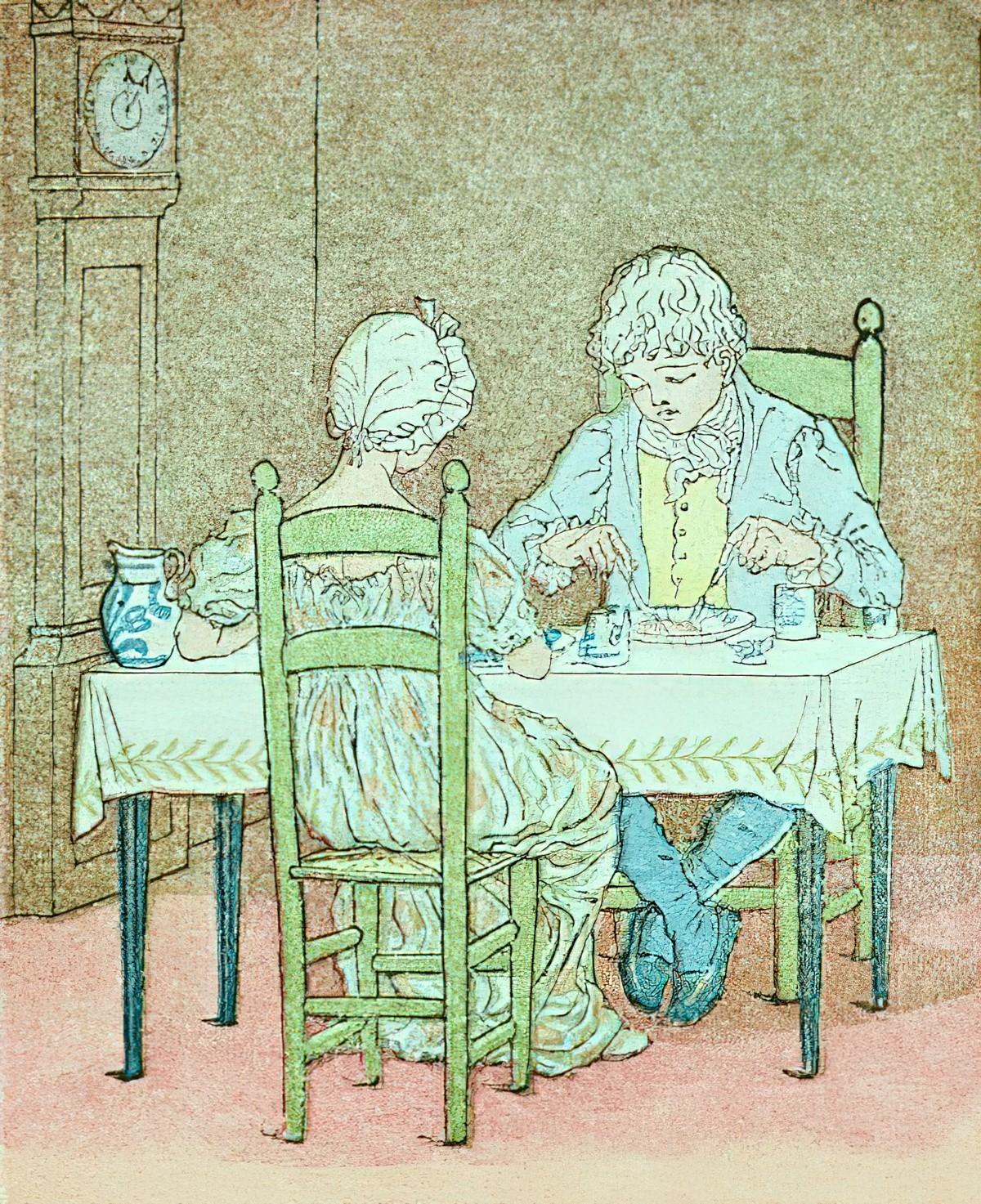
Here again we have no Jack, no wife, simply two children imagining the rhyme as they prepare to eat.
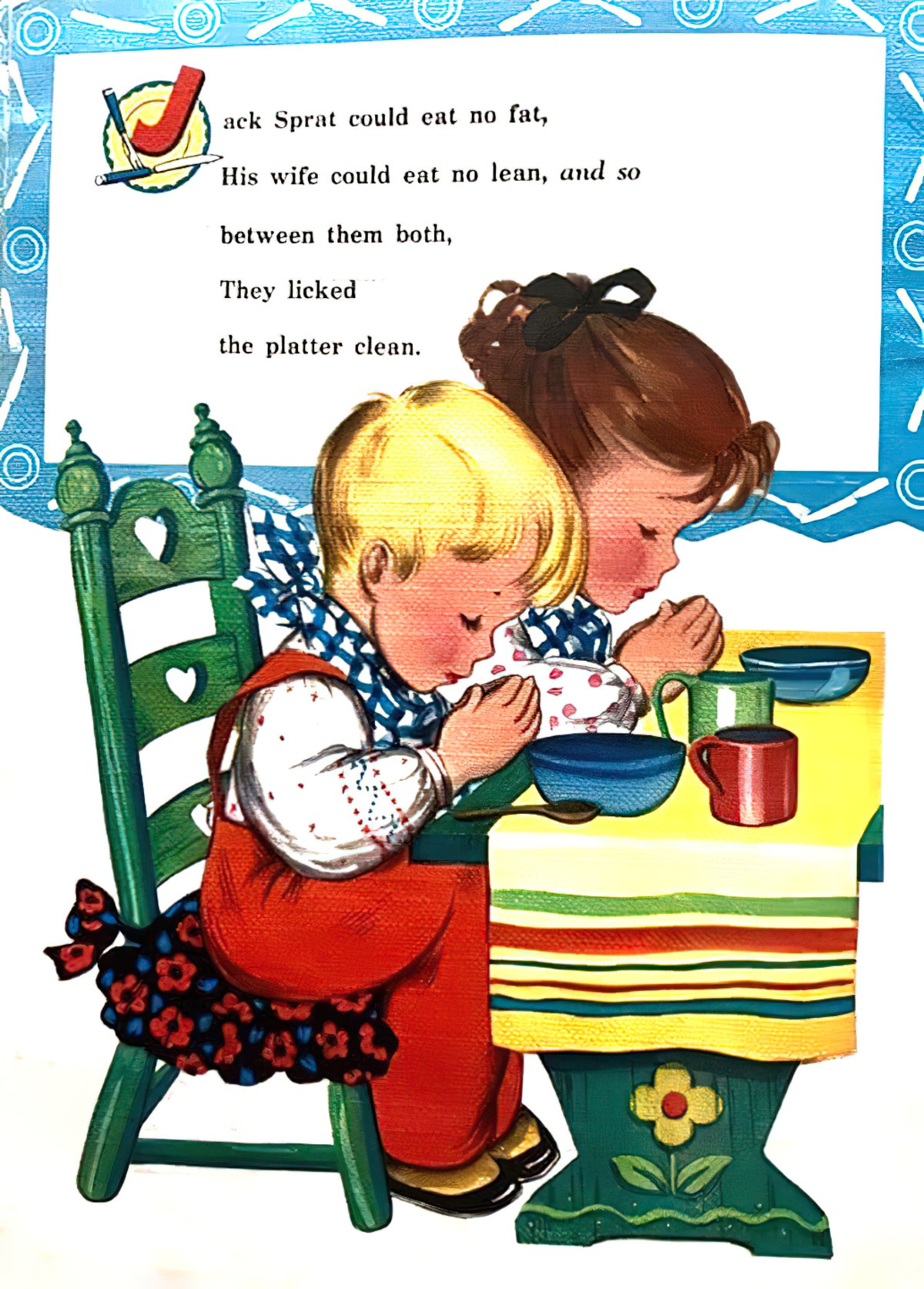
WHAT IS THE JACK SPRAT NURSERY RHYME ABOUT?
Importantly the lines began as a proverb and became known as a rhyme after its inclusion in Mother Goose collections published for children. The proverb went like this:
Jack will eat not fat, and Jull doth love no leane,
Yet betwixt them both they lick the dishes cleane
There are many theories about the meaning of this rhyme and no one knows for sure:
- Jack Sprat could refer to King Charles I, this story being about a conflict between the King and the Parliament during his reign. King Charles I was left financially “lean” when parliament denied him taxation. But with his wife, Queen Henrietta Maria, Charles was free to “lick the platter clean” after he dissolved parliament.
- Jack Sprat could also be related to the Robin Hood Legend about King John and his brother Richard I (Richard The Lionheart).
- The proverb might be about Prince John and his marriage with Joan, which was ultimately called off.
JACK SPRAT’S SCRAWNY CAT
A fuller version of the rhyme includes a cat.
Jack Sprat could eat no fat.
His wife could eat no lean.
And so between them both, you see,
They licked the platter clean
Jack ate all the lean,
Joan ate all the fat.
The bone they picked it clean,
Then gave it to the cat
Below is the most wretched picture book cat I’ve ever seen. Historically, cats were kept as ratters and ate scraps, but in this particular household, there are clearly no scraps. The cat’s tail seems to be suffering from the mange.
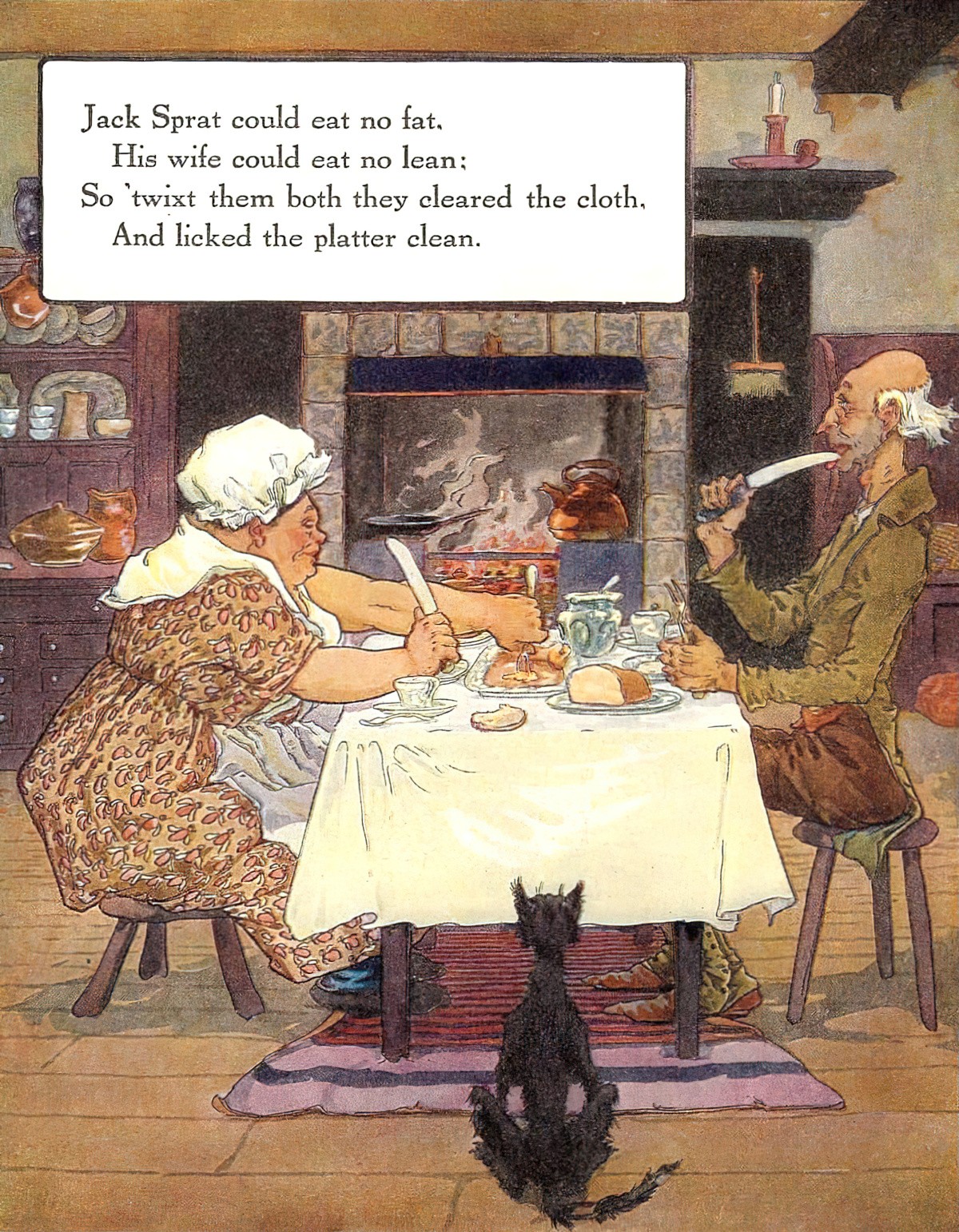
On brand as ever, Arthur Rackham’s illustration is creepy and ominous. The cat does not exist. Perhaps it has died of starvation. Shadows cast ominous doubles against the wall. Light comes from an off-the-page source, evoking the mood of art noir.
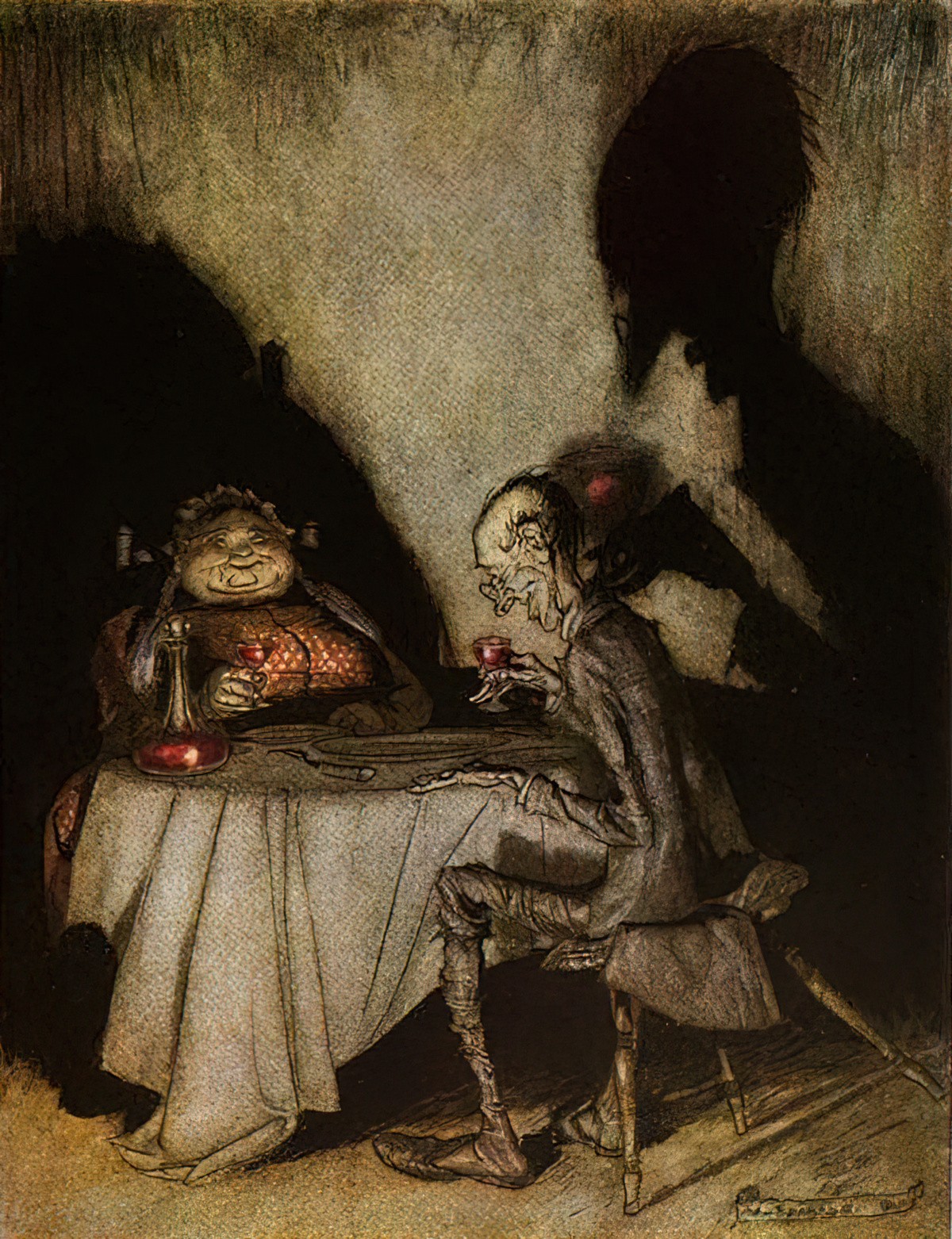
The illustration below features the brighter colours and comic tone required for inclusion in Nursery Rhymes for young children. There is no cat here, but there is a parrot in a very small cage, which is probably dropping dander and poop into those receptacles below. Many classic paintings from this era feature a bird in a cage inside the house, and I’m yet to learn whether this is a purely symbolic feature of narrative art, or whether people really did keep birds hanging in their kitchens like this.
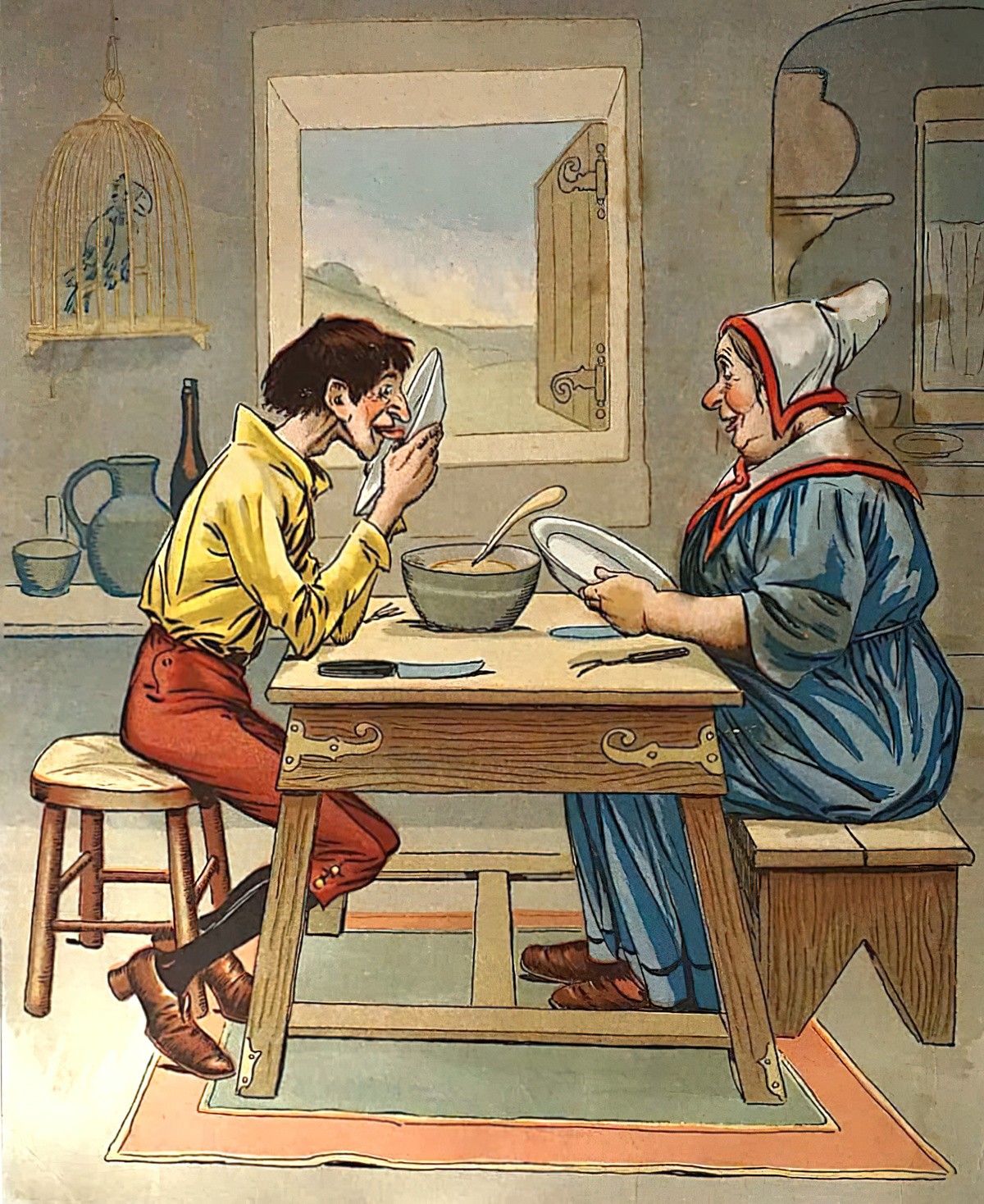
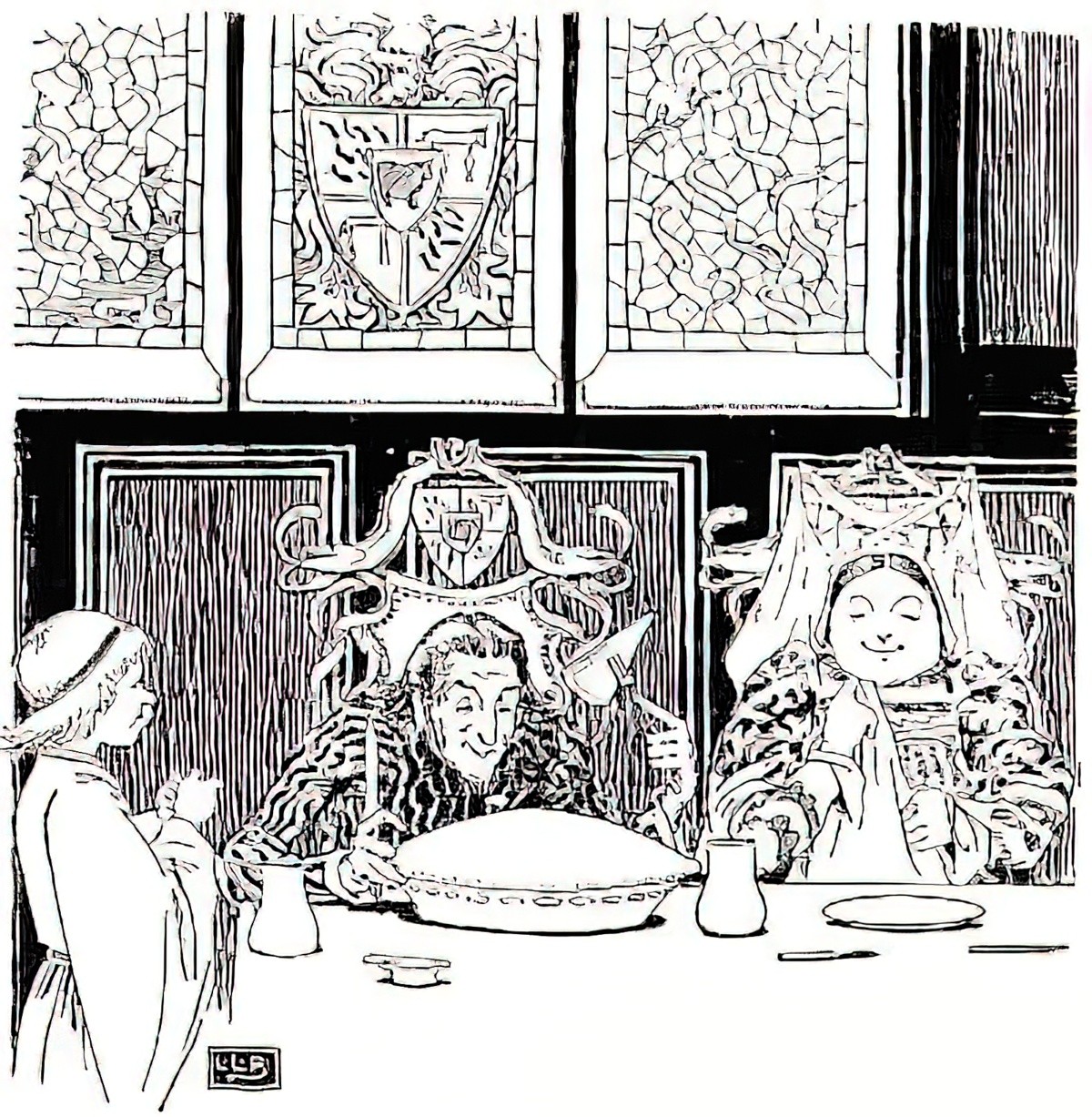
JACK SPRAT’S PIG
Turns out Jack has a pig, as well. I guess there were scraps and they went into the pig’s swill, because the pig seems to be doing just dandy. Or perhaps ‘Little Jack Sprat’ is a prequel to the more famous poem, showing Jack Sprat as a child (rather than as a small-build man). This poem seems to have originated in the 1800s. Someone clearly liked the name. It does have a ring to it, appealing like Dwight Schrute.
Is the Jack Sprat of the later poem even the same person? Sometimes the Sprat of this later poem is spelled with a double ‘t’, for example in The Little Mother Goose.
Jack Sprat had a pig, who was not very little,
from The Big Book of Nursery Rhymes, published 1903.
Nor yet very big;
He was not very lean, he was not very fat;
He’ll do well for a grunt,
Says little Jack Sprat.
Whoever created the illustration below decided to go with an adult Jack who with his voracious wife is about to eat the pig, served whole on a platter. Even more confronting, this is a piglet, not a pig.
